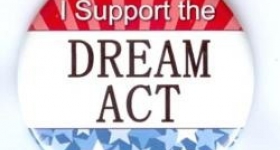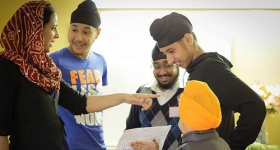The model minority myth: we’ve all
heard it before. This stereotype drives the perception of universal success
among AAPI students, reinforcing that all Asians are good at math, that they
all go to college -- and that none face educational barriers.
I know from personal experience that
this is not the case.
I was born in Worcester,
Massachusetts, where one
in ten people live below the poverty line, and moved to Korea at age six. I
was nine when I returned to Worcester, having lost most of my English. Many of
my teachers dismissed me, assuming I wasn’t intelligent because I was an
English Language Learner, and viewing my culture and low-income background as
deficits. They held me to lower expectations, and it would have been very easy
for me to get lost in the system.
I’m grateful that I had an
exceptional teacher who sought to understand where I was coming from, and found
a Korean translator to help me learn. I was able to take control of my own
education and eventually went to Boston College, where I became active in the
AAPI campus community -- and met others who felt similarly invisible because
their culture and background were dismissed growing up.
According to the U.S. Census, many AAPI
communities -- including Laotian, Samoan, and Tongan -- exhibit higher
rates of poverty than the national average of 15.9 percent -- with the
Cambodian, Hmong, and Marshallese communities experiencing a poverty rate that
is more than twice the national average. Between 2007 and 2011, the number of
AAPIs living in poverty increased by 38 percent, with certain subgroups such as
Native Hawaiian and Pacific Islanders experiencing up to a 60 percent increase.
By and large, our educational system
is not set up for students facing conditions of poverty or coming from unfamiliar
cultures. Many of our AAPI students, who possess
demographic characteristics unlike any other racial group in America (representing more than 48 ethnicities with over 300 spoken languages), are subject to this systemic
injustice. Only 35-40 percent of Cambodian and
Laotian students graduate high school, thus
diminishing the pool of students eligible to attend college. Only one-third of them will go on to attend college.
Similar trends can be found among Pacific Islanders with 49 percent of Native
Hawaiian, 53 percent of Guamanian, 57 percent of Samoan, and 58 percent of
Tongan adults not attending college.
We can all play a role in changing
this reality. My organization, Teach For America, recently launched a nationwide Asian American
& Pacific Islander initiative to raise awareness of
the academic and socioeconomic circumstances facing many AAPI students,
highlight community assets that can be leveraged to meet their needs, and
strengthen the field of AAPI teachers serving as role models.
There is a multitude of ways for people of all ages to become active in promoting
educational equity for all:
- You
can join the Asian & Pacific
Islander American Scholarship Fund and the National Commission
on Asian American and Pacific Islander Research in Education in amplifying the Changing Face of America Campaign, aimed at delivering an urgent
wakeup call to higher education leaders and policymakers about how AAPI
students are often overlooked and underserved in higher education. - Apex for
Youth is based in New York City and engages children aged ten through seventeen
in mentoring and educational programs that prepare them for success in school
and life, generally offered at no cost. - For college undergraduates, organizations such as
the East Coast Asian American Student Union and the Midwest Asian American Student Union promote leadership and encourage
members to address the educational needs and rights of the AAPI community. - OCA-Asian Pacific
American Advocates (previously the Organization for Chinese Americans) has a
number of mentoring and leadership development programs that cater to AAPI youth,
college students, and
professionals. - Numerous organizations are open to professionals looking to
become more involved in the lives of students. Leadership Education For Asian
Pacifics is guided by its leadership
development philosophy that AAPIs can retain their unique cultures, identities, and values while developing new and vital skills that will make them effective
leaders within their own organizations, their communities and the broader
society. The Asian Pacific American Institute for
Congressional Studies hosts leadership academies throughout the year to acquaint
people with current social justice issues affecting the AAPI community.
When we talk about improving outcomes for underrepresented and
underserved students, we must ensure that all communities have a voice -- that
they are affirmed and celebrated for their diverse cultural identities and
histories, respected for their core values, and have access to the resources
and partnerships to strengthen the skills to become the transformational
leaders in their communities and our nation. Our AAPI students, too,
deserve to grow up to become whatever they can dream of, and our country
deserves to benefit from their talent. Working together, we can build a better
future.
***
Sarah Ha is the Managing Director of
Teach For America’s Asian American & Pacific Islander Initiative.









Comments